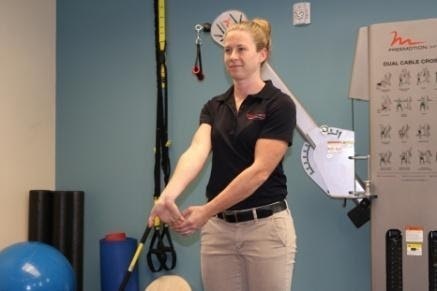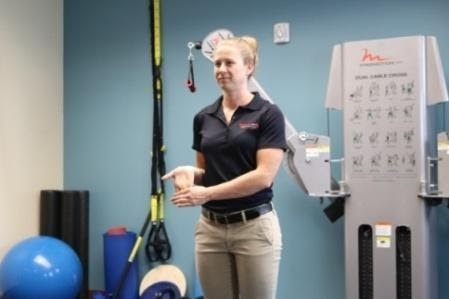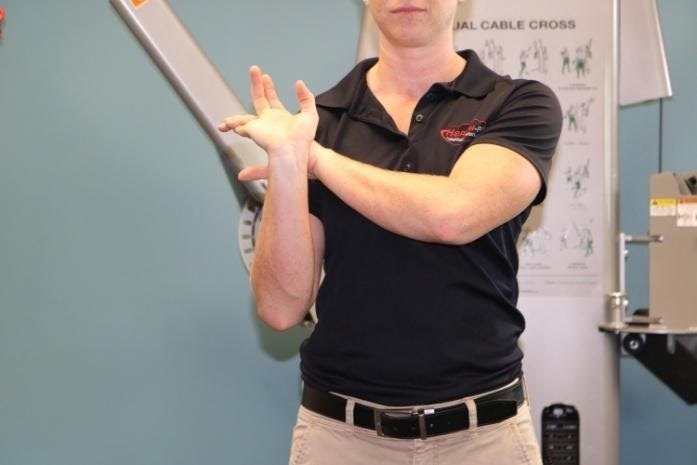
You may have experienced hand or wrist pain before. Maybe in the middle of lifting weights during a long work out or while holding heavy construction tools. Perhaps it was after a long session of playing video games or typing out work assignments on the computer.
Whatever the cause, many people immediately think of a condition known as carpal tunnel syndrome.But what is this syndrome? Is all wrist and hand pain automatically carpal tunnel syndrome, or is it possibly something else?
Carpal Tunnel Syndrome
Carpal tunnel syndrome (CTS) is an entrapment neuropathy.
Have you ever pinched a hose line by stepping on it? If so, you can visualize a similar compression on the nerve that travels down through your wrist and into your hand. This nerve, known as the median nerve, travels through a bony area in your wrist called—you guessed it—the carpal tunnel.
The carpal tunnel itself is a narrow passageway inside your wrist surrounded by bones and ligaments. Compression, or pinching, of the median nerve, can create symptoms including numbness, tingling, and weakness in the hand, wrist, and arm.
2With over 90% of neuropathic cases being from carpal tunnel compression, carpal tunnel is the most common neuropathies or nerve condition.
1A variety of conditions and circumstances can also cause carpal tunnel. Holding vibrating tools, working in an assembly line, engaging in work that requires repetitive flexing of the wrist such as types, taking certain medications, having inflammatory conditions, or having poor wrist and hand ergonomics can all put someone more at risk of developing CTS.
2 Many factors can cause carpal tunnel syndrome: genetic predisposition, history of repetitive wrist movements like typing or machine work, obesity, autoimmune disorders such as rheumatoid arthritis, and pregnancy.1 However, repetitive motions inflame the tendons that run through the carpal tunnel, so they create a high-risk factor for developing CTS. This inflammation can lead to compression of the median nerve.
3CTS symptoms usually start gradually‒in one or both hands during the night‒with frequent numbness or tingling in the fingers.4 Some people report their hands and fingers feel useless, clumsy, unresponsive or even swollen, although when there’s little or no swelling visible.

In many cases of wrist and forearm pain, all of the possible causes of the pain aren’t fully examined before they’re diagnosed as CTS. This leads to the question, is every hand and wrist issue created by compression of the nerve inside the carpal tunnel? The short answer is no!
Pronator Teres Syndrome
There is another condition with symptoms similar to CTS called Pronator Teres Syndrome (PTS). PTS, just like CTS, causes weakness, tingling, pain, and numbness.
The difference between the two is that PTS is caused by a muscle in the forearm‒it has nothing to do with the carpal tunnel in the wrist and hand like CTS. Though Pronator Teres Syndrome is also a condition where the median nerve is compressed, the cause is distinctly muscular. This occurs when the Pronator Teres muscle in the forearm becomes overused.
Think of excessive repetitive motions involved in our daily activities. For example, an aspiring college tennis player working daily to perfect her swing, a cook who spends their day working in the kitchen, lading soup and washing dishes, or a guy remodelling a new kitchen in his house, swinging a hammer to break-up old kitchen fixtures.
Whatever the repetitive action, the same motions cause scar tissue, adhesions, or muscular restrictions to set up housekeeping inside the muscle and entrap the median nerve, causing forearm, wrist, and hand symptoms‒much like CTS.
Although both syndromes have similar symptoms, they need to be treated differently. It would be frustrating to be treated for one condition and see no change in pain, when you actually have the other condition and need a different treatment.
What To Do If You Have Wrist and Hand Pain

The best place to start is to get a physical examination of your hands, arms, shoulder, and neck by your trained chiropractic physician. Your provider can help determine if your pain stems from your daily activities, such as overuse or poor ergonomics, or due to an underlying disorder such as CTS or PTS.
Many cases of carpal tunnel can be treated conservatively, without surgical intervention. Your treatment may include splinting, changing your daily routine, chiropractic care, soft tissue work, and other forms of treatment that exist to safely improve and resolve a painful wrist condition.
4If you’re waiting for your next doctor’s appointment and you’re suffering from wrist and hand pain, here are some basic, easy stretches you can do on your own. These are a method of prevention, not treatment for any wrist or forearm condition.
Perform each stretch to your tolerance (meaning don’t hurt yourself) for two sets, with 15-second holds on each arm.
Wrist Pronator Stretch



- Begin standing with your arm straightened in front of you at chest level, palm facing down.
- Flex arm and stretch fingers down and back with the opposite hand.
- Straighten arm while keeping tension on fingers.
- Rotate arm by twisting fingers inward.
Wrist Flexor Stretch
- Flex arm with palm up like holding a tray.
- Reach through with the opposite hand and stretch the last two fingers down.
Thumb Flexor Stretch
- Flex the arm.
- Extend wrist back, allowing fingers to curl inward.
- Stretch thumb back toward the arm.
Conclusion
Did you have fun with those stretches? Did they cause any discomfort, or did it feel good to stretch those hand and forearm muscles?
Keep in mind, there are other conditions that can affect the wrist, forearm, and elbow besides carpal tunnel and pronator teres syndrome. We only addressed the two most common causes here.
Your local chiropractor is well-versed in extremity conditions that can create discomfort and affect your ability to work and play.
Call today to schedule an appointment with Dr. Andrew Yockey at Prebish Chiropractic Centre for an evaluation of your hand and wrist pain!
References
- Sevy, J.O., and Varacallo, M. (2020). Carpal tunnel syndrome. StatPearls [Internet]. StatPearls Publishing; Treasure Island (FL): Mar.“
- Carpal tunnel syndrome.” MayoClinic. Retrieved from https://www.mayoclinic.org/diseases-conditions/carpal-tunnel-syndrome/symptoms-causes/syc-20355603.
- Mooar PA, et al. Management of Carpal Tunnel Syndrome. J Am Acad Orthop Surg. 2018 Mar 15;26(6):e128-e130.“
- Carpal Tunnel Syndrome Fact Sheet.” National Institute of Neurological Disorders and Stroke. Updated April 2020. Retrieved from https://www.ninds.nih.gov/Disorders/Patient-Caregiver-Education/Fact-Sheets/Carpal-Tunnel-Syndrome-Fact-sheet
- Dididze, M., Tafti, D., and Sherman, A.I. (2020). Carpal tunnel syndrome. StatPearls [Internet]. StatPearls Publishing; Treasure Island (FL): May.





